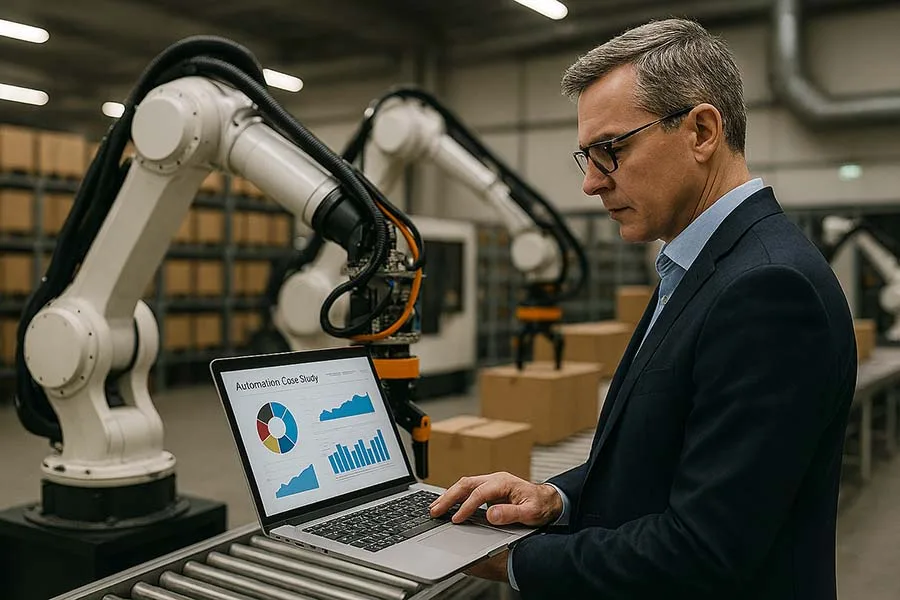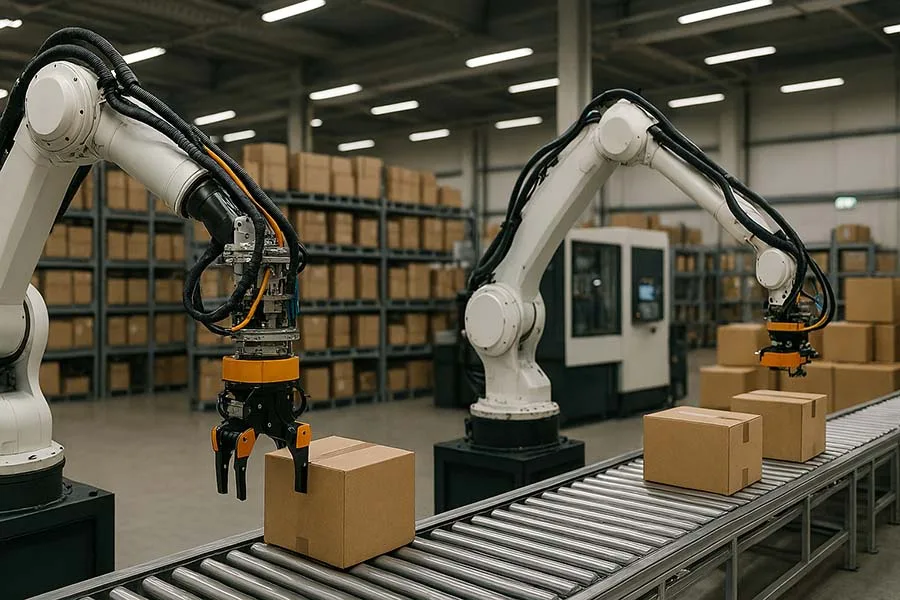Introduction: Learning from Real Automation Success
Industrial automation is more than theory – its impact is most visible in real-world applications. Companies worldwide are adopting automation to optimize production, reduce costs, and improve quality. By studying successful automation case studies, businesses can identify strategies, technologies, and best practices that work.
In this article, we explore some of the most illustrative case studies in industrial automation, from automotive and electronics to logistics and food production.
Case Study 1: Automotive Assembly Line Optimization
Company: Global Automotive Manufacturer
Challenge: High production volume, inconsistent quality, and bottlenecks in welding and painting processes.
Solution:
- Implemented robotic welding arms with precision sensors.
- Installed automated painting robots for consistent coating quality.
- Integrated a centralized control system for real-time monitoring.
Results: - 30% increase in production output.
- 25% reduction in defects.
- Enhanced worker safety by automating hazardous tasks.
Key Takeaway: Robotics and centralized control systems can dramatically improve efficiency and quality in automotive manufacturing.
Case Study 2: Warehouse Automation in E-Commerce
Company: Major Online Retailer
Challenge: Rapidly increasing order volumes and human error in order fulfillment.
Solution:
- Deployed Automated Guided Vehicles (AGVs) for material transport.
- Implemented robotic picking systems integrated with Warehouse Management Software (WMS).
- Used AI-driven analytics to optimize inventory placement and picking routes.
Results: - 40% faster order processing.
- 20% reduction in labor costs.
- Significant improvement in order accuracy.
Key Takeaway: Intelligent warehouse automation is crucial for e-commerce companies dealing with high order volumes and fast delivery demands.
Case Study 3: Food & Beverage Packaging Automation
Company: Global Beverage Producer
Challenge: Manual packaging caused slow throughput and inconsistencies in bottle filling.
Solution:
- Installed automated filling machines with precision sensors.
- Integrated packaging robots and conveyors for continuous flow.
- Implemented predictive maintenance systems to prevent downtime.
Results: - 35% increase in packaging speed.
- Reduced product waste by 15%.
- Improved overall production reliability.
Key Takeaway: Automation ensures consistent quality, higher throughput, and waste reduction in food and beverage operations.
Case Study 4: Electronics Manufacturing Efficiency
Company: Leading Electronics Manufacturer
Challenge: Complex assembly tasks and high defect rates in PCB production.
Solution:
- Deployed robotic arms with vision systems for component placement.
- Integrated automated inspection systems for quality control.
- Used IoT-enabled sensors to monitor production conditions.
Results: - 50% reduction in assembly defects.
- Increased throughput by 20%.
- Improved process traceability and compliance.
Key Takeaway: Automation in electronics manufacturing enhances precision, quality, and traceability.
Lessons Learned Across Industries
- Start with High-Impact Areas: Focus on processes where automation delivers the greatest efficiency or safety gains.
- Integrate Data & Analytics: Real-time monitoring and predictive maintenance maximize ROI.
- Human + Machine Collaboration: Workers can focus on supervision, problem-solving, and high-value tasks.
- Scalability Matters: Automation systems should adapt to changing production volumes and product variations.
Lesser-Known Fact: Some factories now use digital twins – virtual replicas of production lines – to simulate and optimize automation before deployment.
Funny Fact: In one warehouse, robots were so fast and precise that human operators joked they needed a “slow-motion button” to keep up!
Automation Case Studies FAQ
Further Read
- Industrial Automation Solutions
- Industrial Automation Systems: The Backbone of Modern Industry
- Process Automation in Manufacturing: The Key to Smarter Production
- Automation Companies to Watch in 2025 and Beyond
- Automation Machines for Industry: Types, Benefits, and Future Trends
- Automated Material Handling Solutions: Benefits, Types & Future Trends
- Automated Control Systems
- Industrial Automation Solutions: Transforming Modern Manufacturing
- Warehouse Automation Tools: Boosting Efficiency in Modern Warehouses
- Intelligent Automation Technologies: The Future of Industry
- Automated Packaging Systems
- Automation Case Studies
- Automation Trends 2025: What’s Next for Industrial Innovation
Conclusion
Real-world automation case studies demonstrate that industrial automation is not just a future concept – it’s already transforming industries worldwide. By learning from these successes, companies can design their own automation strategies, increase efficiency, reduce errors, and improve workplace safety.
Have you implemented automation in your operations? Share your success stories, challenges, or questions in the comments below and join the conversation on industrial innovation!





